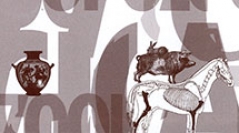

 Anthropozoologica
48 (1) - Pages 137-151
Anthropozoologica
48 (1) - Pages 137-151In the late XIXth century important developments took place in the Charolais, the birthplace of the Charolais breed. As breeding was developing and selection improved the breed, a division of tasks took place in the cattle production cycle between breeders specialized in the births of calves (called “éleveurs-naisseurs”) and breeders fattening cattle on grass (called “emboucheurs”). The fattening of cattle intended for butcher’s shops became a specialization of the Brionnais area which exploited to the utmost the rich pastures it possessed. “In the land where people grow beef steaks”, the art of bringing cattle to their complete growth is a know-how transmitted to the following generations. It consists of finding the ideal animal, which, once left on the meadow that suits it best, develops all its potential, turning the grass it eats into meat. Fattening cattle requires excellent knowledge of cattle and a control of the various stages of the process, from the purchase of lean cattle in cattle-rearing areas to the sale of the fattened animals to wholesale butchers or butchers. The learning of the skill starts at an early age by attending fair grounds and observing what the elders do. In 1887, a specialized trade union (“Syndicat des Emboucheurs”) was created in Saint-Christophe-en-Brionnais. Consequently, the official practices of fattening cattle, based on an original mode of the development of pastures, left their marks on the countryside by shaping the very characteristic bocage in the Charolais-Brionnais area.
rearing, fattening cattle, cattle, Charolais breed, Charolais-Brionnais area, Saint-Christophe- en-Brionnais.